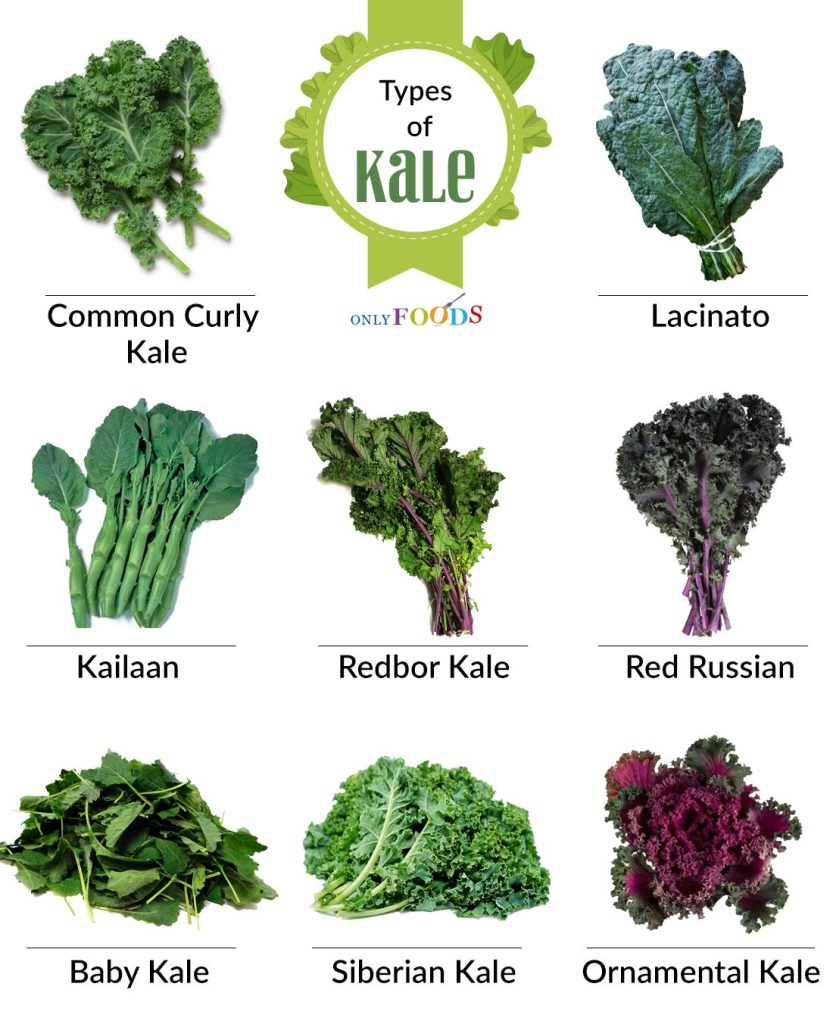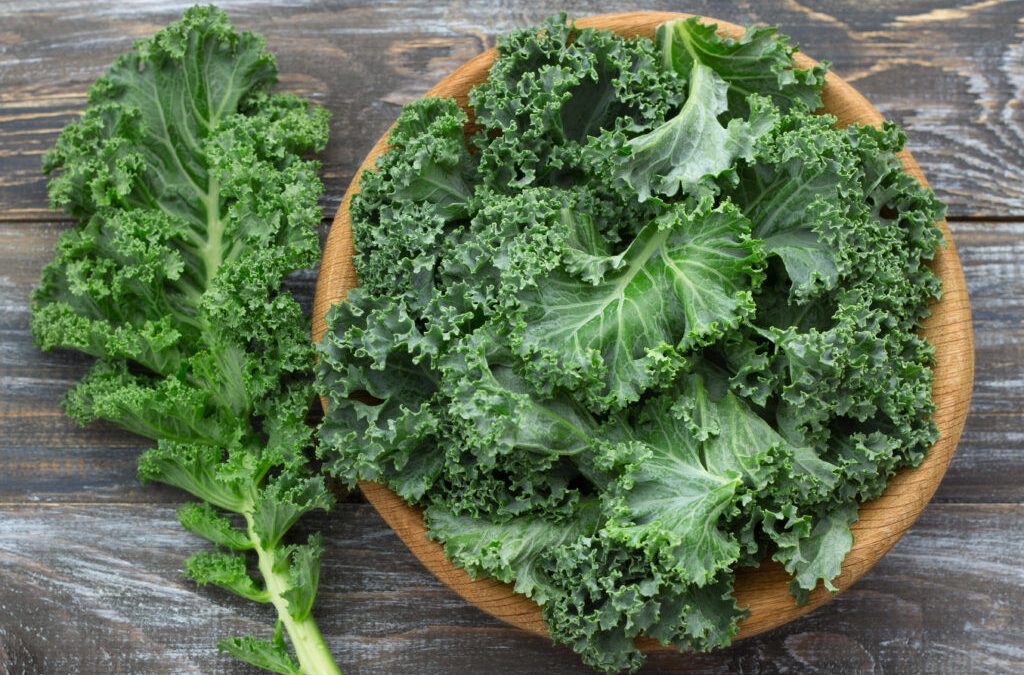Kale
is a leafy green vegetable that belongs to the Brassica family, similar to Brussels sprouts and cabbage. It has gained popularity in recent years due to its nutritional profile and health benefits. Here’s some information about kale:
Kale Nutrition:
Kale is highly nutritious and is considered a superfood. It is low in calories and rich in vitamins A, C, and K. It also provides minerals like potassium, calcium, and iron. Additionally, kale contains antioxidants and fiber, making it a nutrient-dense choice.
Kale Side Effects:
While kale is generally safe for consumption, some individuals may experience certain side effects. Kale is high in fiber, which can cause digestive discomfort such as bloating or gas in some people. It is also high in vitamin K, so individuals on blood-thinning medications should monitor their intake of vitamin K-rich foods, including kale.
Kale Leaves:
Kale leaves are dark green and have a slightly bitter taste. They are quite sturdy and have a slightly rough texture. The leaves can vary in size and shape depending on the kale variety.
Kale Benefits:
Kale offers numerous health benefits. It is rich in antioxidants that help protect against oxidative stress and inflammation. The high vitamin K content supports bone health, while the fiber promotes digestive health. Kale is also associated with reduced risk of chronic diseases such as heart disease and certain types of cancer.
How to Eat Kale:
Kale can be enjoyed in various ways. It can be eaten raw in salads, sautéed, steamed, added to soups or stews, or blended into smoothies. Massaging the kale leaves with a little olive oil and lemon juice can help soften their texture and reduce bitterness.
Types of Kale:
There are several types of kale, including curly kale (the most common variety), Lacinato or dinosaur kale (with dark, bumpy leaves), Red Russian kale (with reddish-purple veins), and ornamental kale (often used for decoration due to its vibrant colors).

Kale Recipes:
Some popular kale recipes include kale salad with a lemon vinaigrette, kale chips (baked or dehydrated kale leaves seasoned with spices), kale and white bean soup, kale smoothies, and sautéed kale with garlic and olive oil.
Kale Salad:
Kale salad is a popular way to enjoy this nutritious vegetable. To make a kale salad, remove the tough stems from the kale leaves, then tear or chop the leaves into bite-sized pieces. Massage the leaves with a dressing of your choice, such as a lemon-tahini dressing or balsamic vinaigrette. Add other vegetables, fruits, nuts, or cheese to enhance the flavor and texture.
Kale Chips:
Kale chips are a healthy and delicious snack. Simply remove the stems from the kale leaves and tear them into chip-sized pieces. Toss them with a little olive oil, salt, and any desired seasonings. Bake them in the oven until crispy.
Kale Benefits and Side Effects:
As mentioned earlier, kale provides numerous health benefits due to its high nutritional content. However, some individuals may experience digestive discomfort due to its fiber content, and those on blood-thinning medications should monitor their vitamin K intake.
Kale Advantages and Disadvantages:
The advantages of kale include its nutrient density, low calorie content, and potential health benefits. The disadvantages may include potential digestive discomfort for some individuals and the need to monitor vitamin K intake for those on blood-thinning medications.
Kale Side Effects and Blood Pressure:
Kale is generally not associated with causing high blood pressure. In fact, its nutrient profile, including potassium and fiber, may be beneficial for maintaining healthy blood pressure levels.
Kale Juice Benefits and Side Effects:
Kale juice can provide concentrated nutrients and antioxidants. It may contribute to overall health and support digestion. However, consuming large amounts of kale juice regularly may cause digestive discomfort for some individuals due to its high fiber content. Moderation is key.
Kale Juice Benefits for Weight Loss:
Kale juice, as part of a balanced diet, can be beneficial for weight loss due to its low calorie and high nutrient content. It provides a good amount of fiber, which promotes satiety and may help control appetite.
Kale Nutrition and Protein:
While kale contains protein, its protein content is relatively low compared to other protein-rich foods. However, kale is still a valuable source of other nutrients, including vitamins, minerals, and antioxidants.
Kale Meaning in Urdu:
The word “kale” does not have a specific meaning in Urdu since it is not a commonly used vegetable in South Asian cuisine. It is known by different names in various languages and regions.
Remember to consult with a healthcare professional or registered dietitian for personalized advice regarding your specific dietary needs, potential allergies, or any concerns related to kale consumption.

